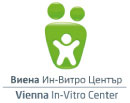The embryonic culture
A fertilized egg cell normally continues to develop further into an embryo. On the 2nd day, respectively 48 hours after the fertilization, embryos find themselves in a multi-cell state for the first time. Differences can already be observed: some embryos contain two cells, some four or five. Furthermore, some embryos show cells completely constant in size whilst in other embryos these cells vary in terms of size and characteristics (e.g. grains are visible alongside the cell). This different development of embryos indicates that some embryos are more likely to result in a pregnancy than others.
IMPORTANT: This differentiation must not be taken for granted! In some cases, a pregnancy does not result, even though constantly divided embryos were used. On the other hand, conceiving can be possible, even if the embryos were divided irregularly.
All these development steps take place within the shell (zona pellucida). The subsequent days the embryo divides further and ideally pases through the following phases :
- Day 3 (72 hours after pick-up or ovulation): 6th to 10th cell phase
- Day 4 (96 hours): Morula = Mulberry
- Day 5 (120 hours): Blastocyst phase
The „blastocysts“ phase also denotes that embryos differ in their characteristics. IVF laboratories use different systems to describe embryos in their blastocyst - phase further. It is essential to find the right embryo/embryos which promise the best chances for success.
On the fifth day of development the embryo in its blastocyst – phase begins to show signs of leaving the outer shell. Even the human embryo needs to hatch, otherwise the blastocyst cannot make contact with the endometrium.
|
Day 1: Fertilized egg cell with male and female pronuclei |
Day 2: embryos in their 2nd to 4th cell phase |
Day 3: embryo in its 8th cell phase |
|
Day 4: Morula |
Day 5: Blastocysts |
Some questions & answersIs the blastocyst culture the best form of treatment? Not every fertilized egg cell divides further and develops into an embryo. Not every embryo divides into all above described phases. There are great differences concerning the development. The task following the egg cell pick-up is to identify the embryos which offer a good chance of success. In principle, embryos do not feel quite as comfortable within the artificial culture mediums as they do in the uterus or the uterine tube. Thus it is very important to only cultivate embryos for 5 days if this method promises a better selection. We plan each embryo transfer individually. The ideal time frame for the embryo transfer is determined by:
|
 |
IMPORTANT:
Should it be obvious after just two or three days which embryos have developed best, it makes more sense to undergo the transfer on the earlier day to spare embryos an unnecessary stay within the artificial culture medium and incubator.
If more than one egg cell is fertilized and several embryos develop well, it will be difficult to choose the best embryos after just two to three days. In such cases, it is better to wait longer, because on the 4th or 5th day it is possible to identify the embryos that developed best – in other words: to perform a “blastocyst culture”.
Please note that not all couples may derive a benefit from using the blastocyst culture. This technique is only advantageous if there are a lot of embryos!







